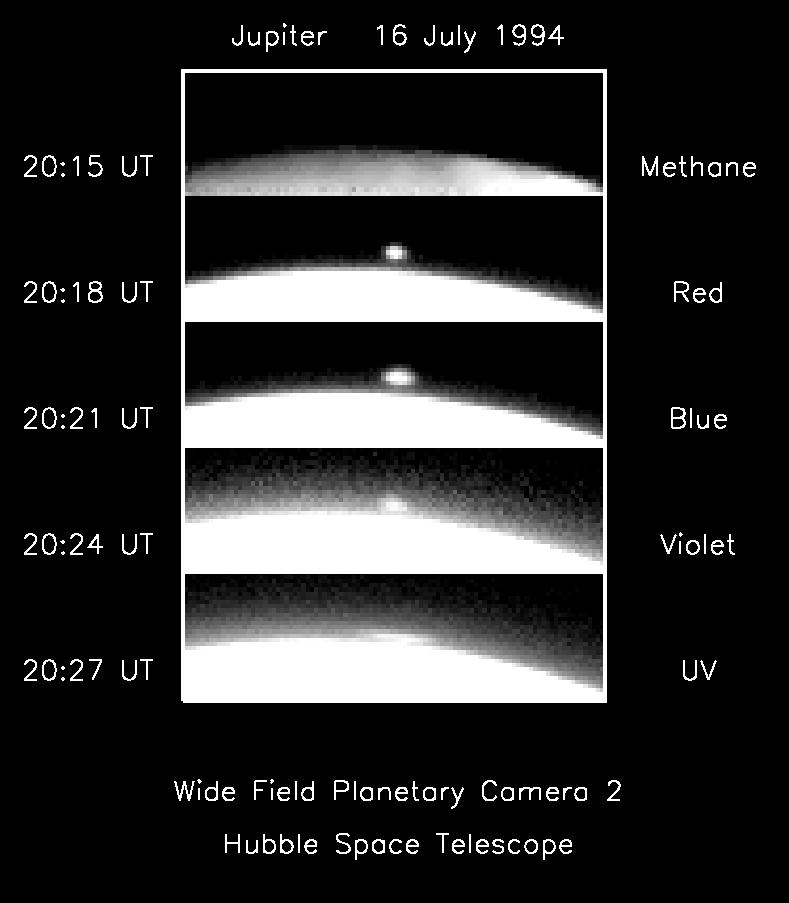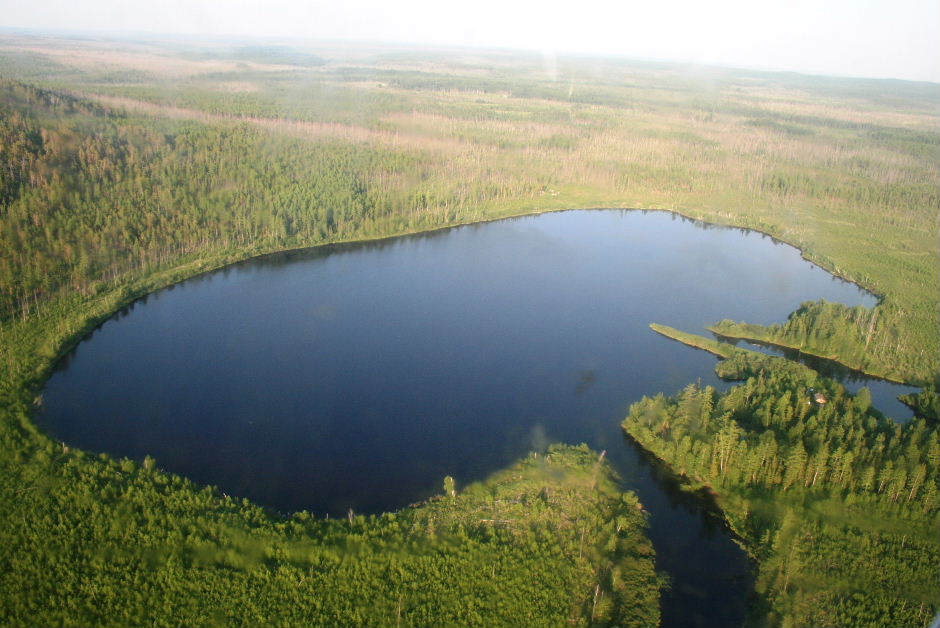So, Jupiter has now been impacted twice in 15 years: first by Shoemaker-Levy/9 in 1994 and now by the mystery Wesley's Object.
So what?
And, why didn't we see this coming?

impact 1994 - click to embiggen
SL9 was a respectably sized comet, probably a few km across, and it was spotted more than a year before it hit Jupiter.
SL9 was tidally torn apart by Jupiter before impact, leading to a chain of impacts, with associated transient "dark spots", bright in the infrared.
The current dark spot looks to be comparable to the first impact of the SL9 fragments, by fragment A, which was probably a bit less than a km across.
The infrared imaging followup should provide some constraints on the size of the impactor.
So, the reason we didn't see this coming and only caught it with serendipitous observations by a top amateur observer is probably because the impactor was relatively small, less than a km across to produce a ~ 1000 km diameter impact scar.

Impact scar to scale - from Keck press release - click to embiggen
The impactor may also have been dark, an asteroid or non-outgassing cometary remnant, rather than an active comet, which would have made it hard to see.
The impactor may also have come in at high inclination, which would have made it less likely that we'd observe it.
If we assume a 300 m diameter body, with density less than 1 gm cm-3, which is plausible, the energy of impact would have been about 500 trillion trillion ergs, assuming 60 km/sec impact speed.
That is about 50 million trillion joules, or about 10 GigaTons of TNT equivalent, which is about 10,000 MegaTons TNT equivalent, roughly comparable to the entire nuclear arsenal of all nations. If you like that sort of comparison.
Of course Earth's gravitational well is shallower than Jupiter's, so the object would have had about 10 times less energy if it had the Earth, or mere 1000 MegaTons TNT equivalent.
Now, the interesting thing is that we can assume we are essentially complete in out observations of current Jupiter impacts, and we infer sub-km impactors are hitting every decade or two, which is more than an order of magnitude higher than previous estimates of one every few centuries, up to the small number statistics we have at this point.
This suggests, very tentatively, that the flux of the most worrying planetesimals - those large enough to do serious damage, or "continent killers" as we like to call them, but which are also hard to see, is high.
How high?
Well, Jupiter has a mass of 320 times that of the Earth, radius a little more than 10 times that of the Earth - but, its gravitational well is deep enough that it effectively focuses the orbits of planetesimals that come close to it - this enhances its cross-section for gravitational interaction by approximately the ratio of (vJ/vc)2, where vJ is the escape velocity at Jupiter's "surface" and vc is the typical encounter velocity of an asteroid or comet is at Jupiter's orbit.
This factor is roughly, 30-100, depending on what the planetesimal orbit is, so we can crudely estimate that Jupiter gets hit roughly 10,000 times as often as the Earth.
So, a "continent killer", like Wesley's Object, ought to hit the Earth about a few times every million years, rather than once every few million years as previously estimated.
This is of course still highly uncertain. We might just have been lucky, or Jupiter unlucky, in having seen two back to back impacts in a short time, or it might be that we're finally looking closely and often enough to catch the frequent impacts.
The only way to know for sure, is to look, which is why we observe.
The next interesting question is what the "mass function" of the planetesimals is in this range: that is, for every ~ 300m object, how many ~ 100m objects are there?
Ten times more? Hundred times more? 1000 times more?

Lake Cheko - click to embiggen - from Uni. Bologna site>

under the lake - reconstruction - click to embiggen
The Tunguska impactor was likely close to, or a bit less than, 100m in size, and such objects seem to hit the Earth about once per century, or maybe every few centuries. Which suggests the mass function is close to M-1 across this range, which would be interesting, certainly it is not as steep as M-2, and it is unlikely to be as shallow as M-1/3.
Few more data points and we will know for sure.
- Log in to post comments

Hmm . . . "continent killer" . . . "Wesley's Object" . . ..
Perhaps they should renamed it "Wesley's Crusher."
I'd like to run into Beverly Crusher! lol
Aren't you assuming uniform populations for the inner and outer solar systems?
Since Jupiter gets hit by objects from both (and mixes them via scattering), maybe it is just the outer solar system that is impactor-rich.
Also, given the high latitude of the impact, how could it not have had a high initial inclination?
Finally, did anyone in the Western hemisphere post a "most recent no-spot" pic yet from the previous rotation? Jupiter would not yet have risen in Australia at the time the spot position rotated out of view on the rotation before the one where detection was made.